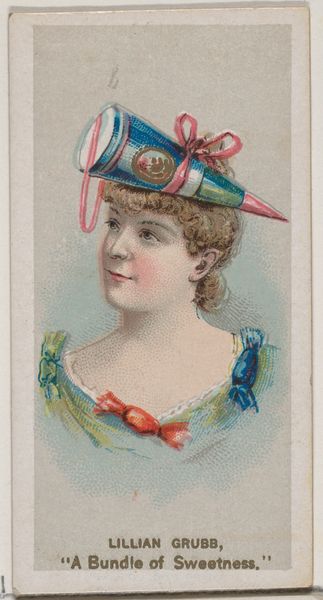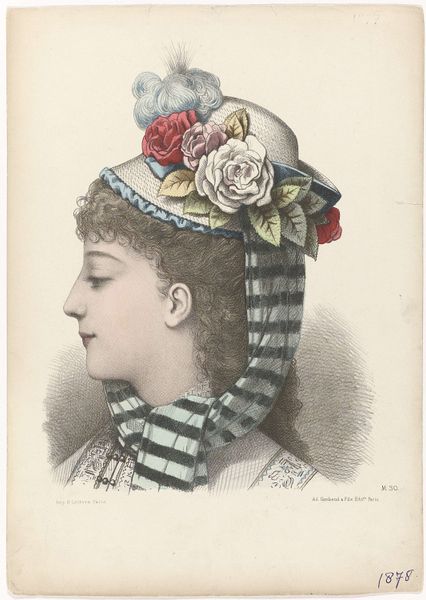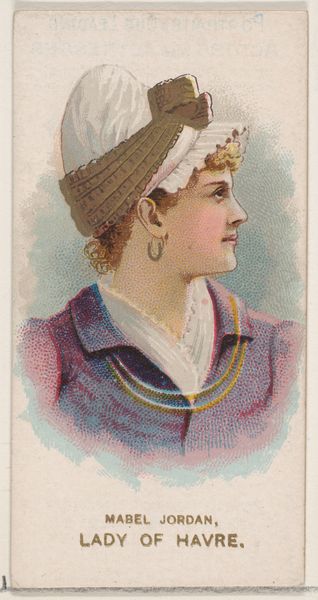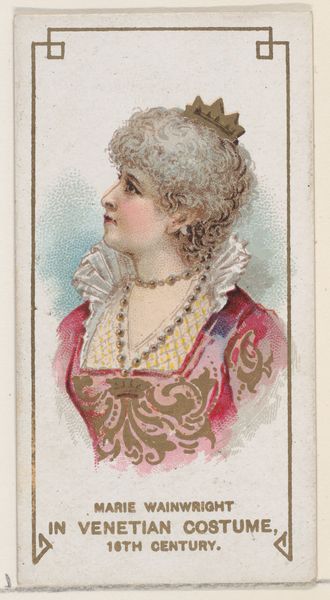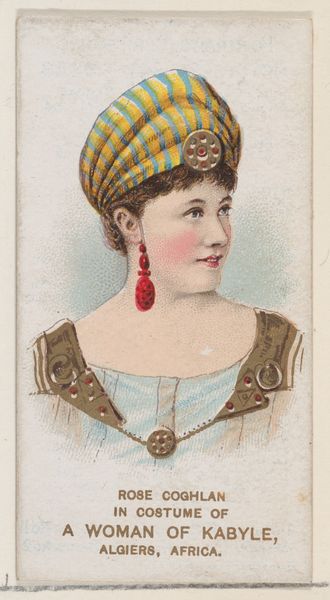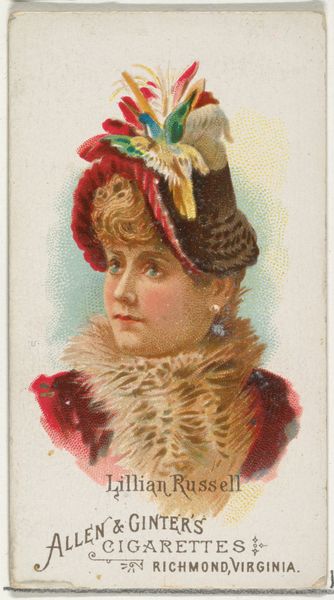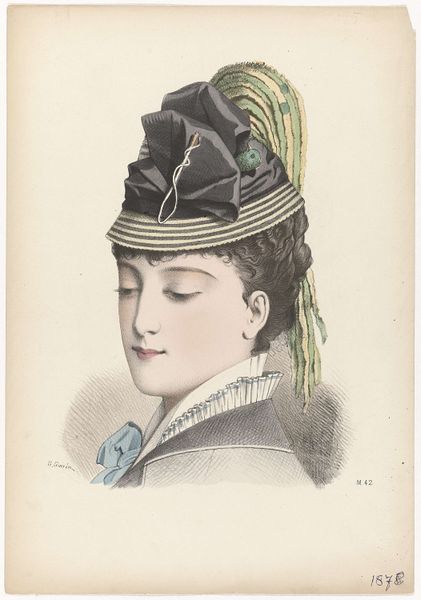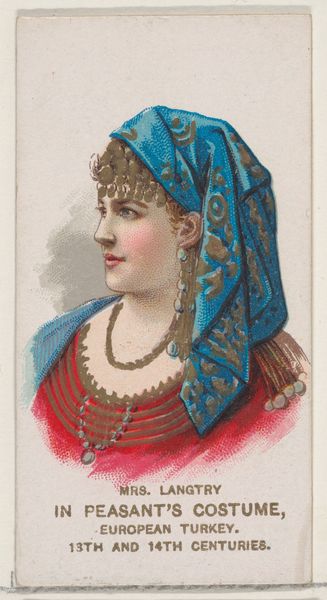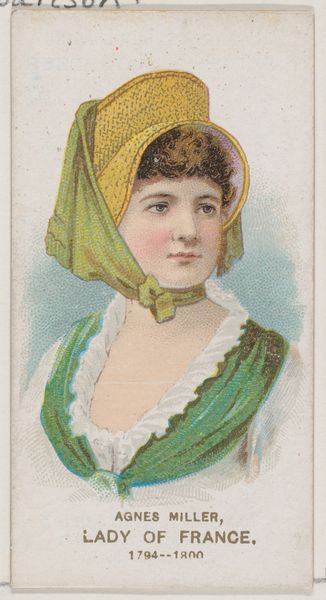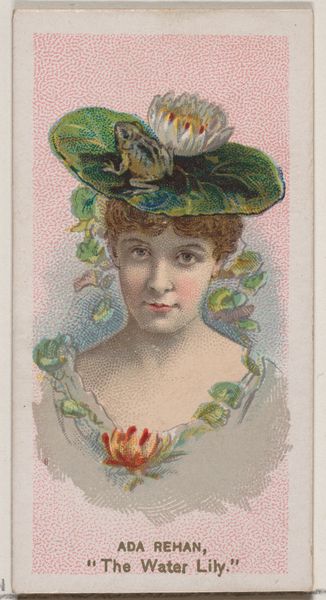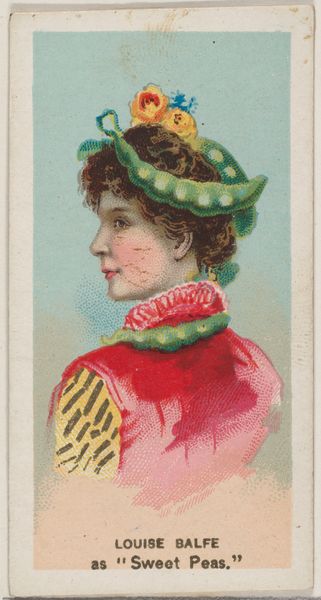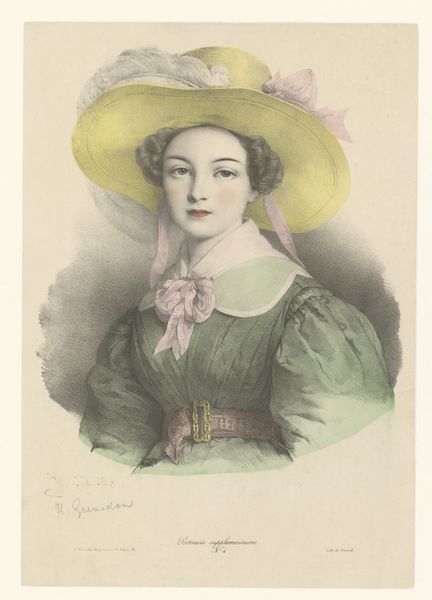
Dimensions: height 318 mm, width 244 mm
Copyright: Rijks Museum: Open Domain
Curator: Allow me to introduce "Vrouwenhoofd met een hoed met striklinten, 1875, No. M.23," a captivating print by A. Néraudon. It strikes me as an object that both embodies and reflects the societal roles ascribed to women during that period. Editor: The initial impression is one of delicate elegance; that meticulous detailing on the hat and ribbon screams 'finely crafted.' Curator: Exactly. Looking closer, the very choice of the engraving medium, permits a focus on line and detail. Consider that it reflects the commercial printmaking trade in Paris at the time, suggesting a potential for mass production and, with it, a wider reach to influence fashion and ideals of beauty. Editor: Absolutely, and one wonders about the specific workshops producing such prints, the artisans involved, their labour... the economic backdrop to this supposedly simple portrait is potentially vast. Were they exploiting cheap labour? Curator: That's precisely what interests me – how images like these naturalized standards of feminine appearance that disproportionately affected working-class women, for example, and set unachievable ideals in this rising fashion culture. How might her hat be viewed as an element of conspicuous consumption? Editor: Or perhaps conversely, a source of economic independence? By crafting or trading these detailed fashion items, perhaps women also subtly gained access to resources, a voice through creation, in a patriarchal society. How complicit versus how empowering might this kind of work be? Curator: It speaks to the complex interplay between constraint and agency in shaping female identities in that historical moment. What do you take away from the execution? Editor: The layering is amazing! I wonder about the printing process. The engraving is incredible – those delicate textures bring her face to life; it feels almost photographic in its clarity of line. Curator: I agree, that the visual detail invites reflection on societal expectations regarding gender. Its historical context opens a path to contemporary discussions of beauty standards, labor ethics and self expression. Editor: Well, it certainly prompts further reflection on how something seemingly frivolous as fashion can contain fascinating stories about materials, class and consumption, even in a single printed impression.
Comments
No comments
Be the first to comment and join the conversation on the ultimate creative platform.
